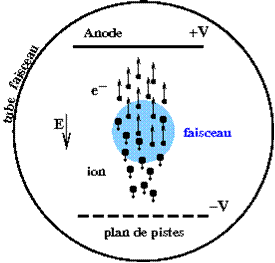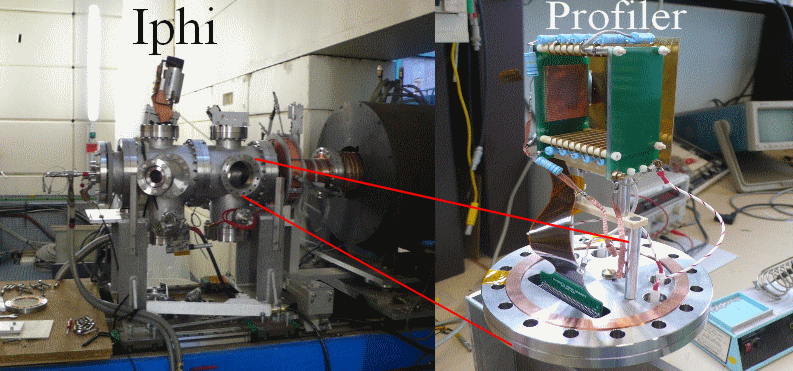Part of the IFMIF-EVEDA1) project consists of the construction of a prototype deuton2) accelerator at Rokkasho-Mura in Japan. The accelerator is due to enter service in 2013. The purpose of the EVEDA phase is to validate the IFMIF project which aims to investigate the strength of materials subjected to a high neutron flux in order to characterise the materials to be used in the construction of DEMO3).
This high-current linear accelerator will produce a 125 mA beam of deutons with energies of around 10 MeV. A number of diagnostic stations need to be installed along the line in order to guide the beam through the various elements of the accelerator. The purpose of these diagnostic stations is to provide data on the beam profile, energy, position, etc. at each of the station positions. With a maximum beam power of 1.25 MW, the use of any form of measurement device that interacts with the beam is impossible as it would be immediately destroyed!
SIIEV is contributing to the construction of the accelerator itself and to some of the diagnostics. One of the challenges facing the designers of the diagnostic systems is to produce an instrument to measure the profile of such a high power beam.
A ‘non-interceptive’ profile monitor has been developed in close collaboration with SEDI. The operating principle of this detector (see diagram) is based on the ionisation of residual gas present in the ‘vacuum’ inside the tube by the beam. An electric field is applied across the direction of beam travel between a conducting plate (anode or cathode) and a flat array of conductive strips (32 strips over 40 mm). The ionised particles (electrons or ions) drift towards the strips generating an electric current that is measured by the associated electronics every microsecond.

This diagram shows the beam profile in yellow, sampled at 1 µs intervals and displayed on an oscilloscope.
µThis prototype has been tested at Saclay, using the proton beam supplied by the IPHI4) source at energies of 75 and 95 keV. The tests, at currents varying between 1 and 13 mA, were carried out between the 15th and 28th July 2008. The signal caused by the ionisation was clearly seen. Additional data relating to the electrical insulation and the electronics was also gathered and will be used to improve the next version of the detector planned for delivery in mid-2009. Extrapolating the measured results to the energies used in IFMIF (40 MeV) has shown that a residual gas ionisation detector of this type should operate satisfactorily at these levels.
PS: We would like to take this opportunity to thank the IPHI team, not only for their warm welcome, but also for the quality and reliability of their beam.
Author:
Jacques MARRONCLE (IRFU/SIIEV)
Contacts:
Fabien JEANNEAU (IRFU/SEDI/LDEF)
Julien PANCIN (IRFU/SEDI/LDEF)
1) International Fusion Materials Irradiation Facility - Engineering Validation and Engineering Design Activities.
2) Deuton or is a deuterium nucleus consisting of a proton and a neutron.
3) Fusion reactor demonstrator
4) High Current Proton Injector
• pas de titre • Accelerators, Cryogenics and Magnetism Division (DACM) • The Electronics, Detectors and Computing Division • The Systems Engineering Division





